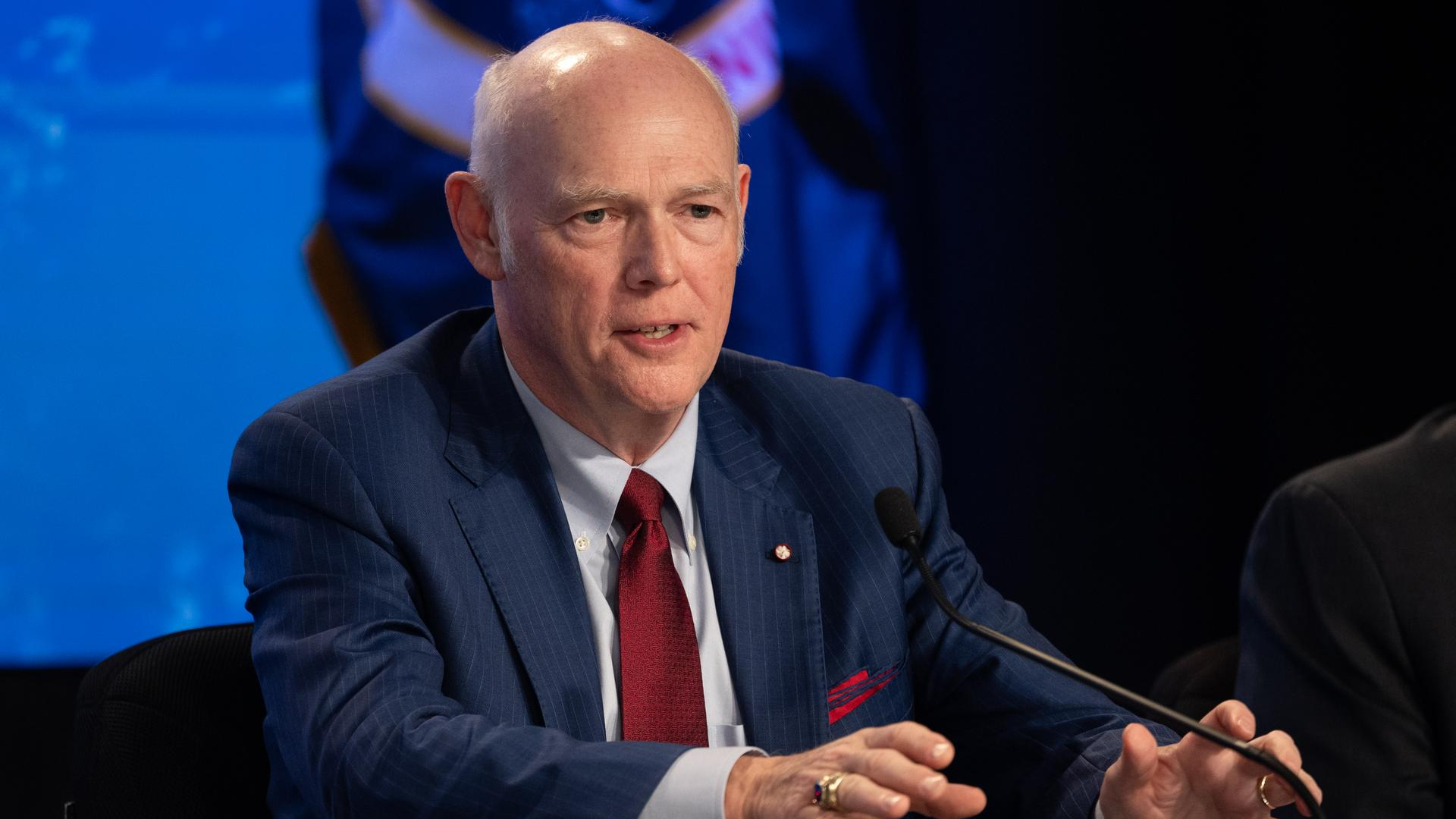New Shepard: Rocket for space tourism
New Shepard is Blue Origin's reuseable launcher for suborbital flights

New Shepard is a rocket manufactured by Blue Origin for space tourism. The rocket is designed to take passengers into suborbital space inside of a crew capsule. The capsule features six large observation windows, one per seat.
New Shepard is fully reusable and as of June 2021, it has made 15 uncrewed test launches. In November 2015, it was the first reusable rocket to successfully make a soft landing on the ground, beating out the more famous SpaceX Falcon 9 booster by several weeks.
Blue Origin was founded by entrepreneur Jeff Bezos, who made his fortune with Amazon. Bezos also purchased the Washington Post in 2013. Forbes magazine has ranked him as the richest person in the world for several years running; as of July 2021, the publication estimates his net worth at a little more than $200 billion.
Rocket specs
Rocket height: 60 feet (18 meters)
Rocket stages: 1 (liquid hydrogen and liquid oxygen)
Carry capacity to suborbital space: Not disclosed
Approximate altitude: 307,000 feet (93,573 m)
Breaking space news, the latest updates on rocket launches, skywatching events and more!
Spacecraft capacity: 6 passengers
Spacecraft volume: 530 cubic feet (15 cubic meters)
Blue Origin is targeting its first crewed launch on July 20 to mark the 52nd anniversary of humans landing on the moon. Bezos will be on the flight, along with three other passengers.
For a typical flight, New Shepard launches vertically and soars for about two and a half minutes before the main engine cuts off and the capsule separates from the rocket. Passengers are weightless for about four minutes during the 11-minute flight, and are high enough (at an altitude of 307,000 feet or 93,573 meters) to see the curvature of Earth. The spacecraft coasts for a few minutes in space before re-entering the atmosphere and using an autonomous, rocket-powered vertical landing system to touch down.
New Shepard is named after NASA Mercury program astronaut Alan Shepard, who was the first American to fly in space in 1961 on what was also a suborbital flight. Passengers aboard the Blue Origin spacecraft, however, will enjoy more than 10 times the space in the capsule than Shepard did in his Freedom 7 spacecraft, according to the company.
Up to six people can fly into space at once; the interior volume is said to be large enough for everyone to float and move around. The large windows will provide a view of Earth.
In addition to passengers, the spacecraft aboard New Shepard can carry standardized experiments of up to 50 lbs. (23 kilograms), with larger options available for custom requests.
Major milestones
Test flights
Prior to flying in space, Blue Origin launched several prototype test vehicles. The first test flight took place in November 2006, and the first vertical landing (which took place after a short flight) happened early in 2011. A second test vehicle in August 2011 crashed due to flight instabilities, according to Blue Origin.
Blue Origin received $3.7 million from NASA under the first phase of the Commercial Crew Development program, in 2010. The money was used for a launch abort system and composite pressure vessels. (After several more commercial crew phases, NASA ultimately selected SpaceX's Dragon and Boeing's CST-100 spacecraft in 2014 to eventually take astronauts into space.)
New Shepard 1
The New Shepard rocket has gone through a few iterations over the years. The first flight of New Shepard 1 took place on April 29, 2015. While the flight was a success, the rocket failed to land as planned due to losing pressure in the hydraulic system. The capsule made a safe touchdown.
New Shepard 2
The next rocket version, New Shepard 2, made a world-first soft booster landing on Nov. 23, 2015. The capsule also landed successfully on that flight. Blue Origin successfully reused a booster for the first time on Jan. 22, 2016. Reused boosters also flew successfully later that year on April 2, June 19 and Oct. 5. The final flight of New Shepard 2 in October 2016 was an abort test for the capsule: while the rocket was not expected to survive, it made it safely to the surface and the rocket was retired.
In photos: Blue Origin's New Shepard 2.0 aces maiden test flight
New Shepard 3
The New Shepard 3 rocket debuted on Dec. 12, 2017, with a reusable booster, a capsule and a mannequin called Luke Skywalker. This flight was the first time that a New Shepard rocket flew under a non-experimental permit from the Federal Aviation Administration. This situation allowed Blue Origin to carry several revenue-generating experiments on board the flight.
New Shepard 4
The New Shepard 4 rocket, dubbed RSS First Step, was designed to be the first vehicle to carry passengers. The rocket made its first flight on Jan. 14, 2021 and flew again on April 14. During that second flight, Blue Origin employees rehearsed the entry and exit procedures, although they vacated the capsule for the flight proper.
Additional resources
- Learn more about the Blue Origin company on their website.
- Keep up with their latest news and announcements by following Blue Origin on twitter.
- Find out more about NASA's contracts with Blue Origin on NASA's Blue Origin website.
This article was updated on July 15, 2021 by Space.com Senior Writer Meghan Bartels.

Elizabeth Howell (she/her), Ph.D., was a staff writer in the spaceflight channel between 2022 and 2024 specializing in Canadian space news. She was contributing writer for Space.com for 10 years from 2012 to 2024. Elizabeth's reporting includes multiple exclusives with the White House, leading world coverage about a lost-and-found space tomato on the International Space Station, witnessing five human spaceflight launches on two continents, flying parabolic, working inside a spacesuit, and participating in a simulated Mars mission. Her latest book, "Why Am I Taller?" (ECW Press, 2022) is co-written with astronaut Dave Williams.

